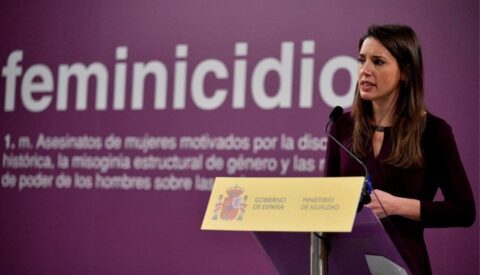The Flamenco Dancer, More Than A Symbol
Few artistic disciplines have as many women as leading figures as flamenco does.
Article
2024

Article
Flamenco is a cultural expression that has welcomed ethnic and religious minorities since its creation. In the Iberian Peninsula, it found fertile ground and grew through popular culture, as well as through secular and religious rituals.
It is a symbol of integration: Any flamenco style (or palo) can be dissected to find elements of different ancient and geographically distant cultures — all those different layers on which civilization is built and which harmoniously coexist in flamenco.
In terms of symbols, the figure of a woman flamenco dancer is part of the Spanish imagination. Her body is in a starting position or posing at the climax (desplante), celebrating a ritual. Her traditional ruffle skirt or dress with a tail (bata de cola) emphasizes the difficulty. Her head is held high, exalting feminine strength.
The key to sinking into a flamenco artist’s performance is to observe and listen to their capacity to occupy the space between beats. That space that separates the present from what is to come. It is essential to learn to detect which spaces are musical and aesthetic, incorporated to embellish the piece. Because it is precisely those that make flamenco a genre of authors, in which improvisation is the fruit of one’s own knowledge and requires taking risks.
The key to sinking into a flamenco artist’s performance is to observe and listen to their capacity to occupy the space between beats.
Flamenco is always an unprecedented experience, nourished by the best who turn it into pure art. And only a few artistic disciplines count so many women as leading figures. Women in flamenco are, by right, artists; it is impossible to fake and only their artistic quality can allow them to master it.
Yet they do not escape patriarchal efforts to make women’s creative capacity invisible, to subject them to a greater demand for knowledge or to exist under the paternalistic discourse of a male avant-garde school to which they are obliged to belong, whether or not they actually do.
Carmen Amaya
Carmen Amaya and Pastora Pavón, «La Niña de los Peines» (the Girl with the Hair Combs), two women of gypsy ethnicity, remain the queens of dance and singing, respectively. Both took countless risks throughout their careers, way beyond the famous trousers Amaya danced in. In fact, she was not the first woman to wear them, although she was the first to dance dressed this way for alegrías (a form of flamenco).
It is surprising that something as superficial as clothing transcended her. And no one takes into account that her dance and choreographic creation which translated her own experience as a woman, as a gypsy and as an exile.
Her creative process and experimentation with the guitarist Sabicas (Agustín Castellón Campos) is a precedent of all flamenco avant-garde. One cannot reflect on her work with Joe Beck, «Rock Encounter», recorded in New York in 1966, ignoring the musical relationship between «Carmen» and «Agustín», just as one cannot talk about Enrique Morente’s record «Omega» without talking about how the two meet, precisely at Amaya’s house in Begur at the 1989 International Jazz Festival and which materialized in «New York-Granada» (1990).
Pastora Pavón
Pastora Pavón recorded bulerías, at a time when it was unthinkable that this flamenco style — considered second-class until then — would be used in a discographic work, thus receiving fierce criticism for her «audacity». The same criticism would later be thrown at singer Camarón de la Isla, gypsy musician El Lebrijano or Enrique Morente himself. But, for all, it was the musical choice, and not them as artists, that was questioned.
Pastora Pavón recorded bulerías, at a time when it was unthinkable that this flamenco style
Pavón recorded nearly 260 songs on records and released 13 compact discs. She mastered all the styles and is credited with creating the bambera style, defined by musicologist Faustino Núñez as the adaptation of an Andalusian folk melody to flamenco. Yet what has transcended her outside the flamenco universe was reduced to almost nothing.
Carmen Linares
Carmen Linares became a professional singer more than 50 years ago. She could always count on the support of her father, Antonio Pacheco, and her husband, the journalist and flamenco researcher Miguel Espín. Among her various works, «Antología. La mujer en el cante» (1996) stands out. Linares took advantage of her outstanding position as a singer to give visibility and permanence to her predecessors, singing for them and through them.
Without Linares, it would have been much harder for women’s payo (non-gypsy) singing to be recognized, just as this avant-garde universe would not have come into being without Rocío Márquez.
Rocio Márquez
In 2014, the Huelva native released «El niño», which featured names such as Raül Refree and Niño de Elche. In this work, she expands the flamenco language and proposes a referential aesthetic renewal for various artists.
A decade and several albums later, Márquez continues to stretch this horizon with «El tercer cielo» (2022), this time accompanied by musical artist Bronquio. In each of her works, she pushes the invisible boundary of the possibilities of flamenco renewal.
Blanca del Rey
Blanca del Rey, born in Córdoba in the late 1940s, is a pioneer in the observation of silence as an essential element in flamenco. She has a special ability to transition to a poetic language, from which she has built avant-garde choreographies that are still current and influence the work of contemporary dancers.
One remarkable example of the topicality of her work is the dancer and choreographer Vanesa Aibar who, with her show Reina del metal (which won the Max Dance Award in 2023), accompanied by the percussionist Enric Monfort, defends contemporary aesthetics over the original.
Rosalía
Finally, researchers in field of flamencology point to singer Rosalía as a student of the Morentean school, as a way to justify her work under the precedent of Enrique Morente. That would have been the case, if she had stayed in flamenco or in the choral polyphonies characteristic of the Granada native.
But she chose to go further in 2018, when she released «El mal querer», in which she transcends the myth and creates a new form — which has not yet been named. Rosalía takes the risk a step further every time, just like Carmen Linares, Vanesa Aibar, Rocío Márquez or Blanca del Rey did before her.
Whose narrative?
Flamenco is a living art that needs risk to keep evolving. These female creators use their personal experience and the exceptionally high level of expectation placed on them to infuse their proposals with excellence.
Making them invisible and undervaluing their work and contribution has nothing to do with either them or flamenco; it always has to do with the ones coming up with the narrative. And it is our responsibility to question it.
This content is part of a collaboration agreement of ‘WorldCrunch’, with the magazine ‘Ethic’. Read the original at this link.





